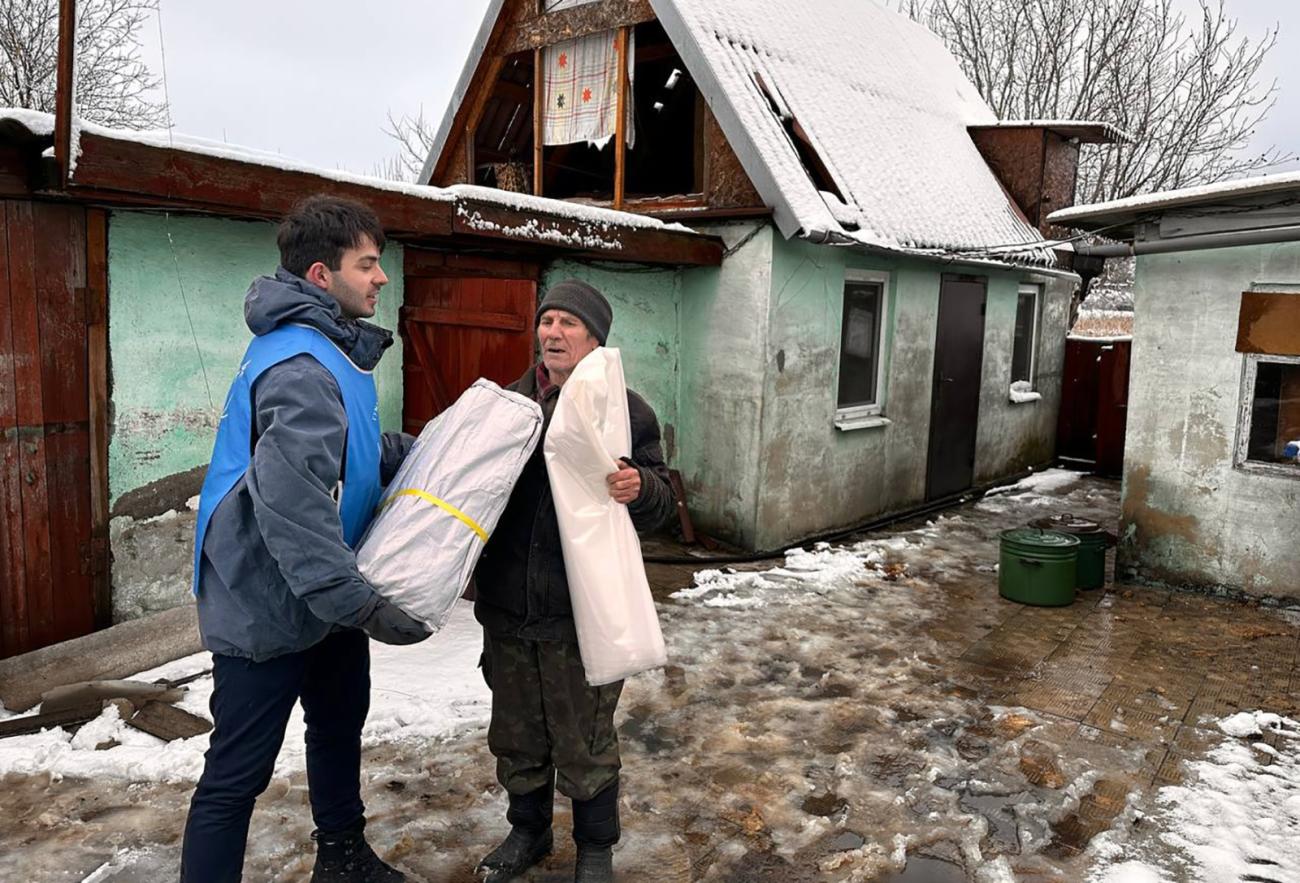Facing another winter in war-torn Ukraine

As winter settles in, Ukrainians continue to grapple with the reality of living in a war-torn country.
Ukraine’s second winter since the war began is bringing a sense of fear and unease for millions of people. "There were continuous blackouts last winter," says 71-year-old Lyudmyla from Ozershchyna village, in the north of Ukraine’s Kyiv Region. "I received this torch as a present from my daughter so I could have some light in my kitchen."
"There were continuous blackouts last winter," says 71-year-old Lyudmyla from Ozershchyna village, in the north of Ukraine’s Kyiv Region. "I received this torch as a present from my daughter so I could have some light in my kitchen."

Lyudmyla experienced the blackouts during last year’s cold winter months, following the Russian Federation’s full invasion of Ukraine. Now, as another winter arrives, people across Ukraine continue to navigate the path to recovery from the suffering they experienced last winter.
The war’s impact has been profound across Ukraine. Homes, schools and vital community facilities, such as health care and energy systems, have been damaged or destroyed, and they remain under constant attack due to intensified hostilities. The front-line oblasts in the south and east are the worst affected.

The World Health Organization has verified more than 1,300 attacks on health-care facilities. This makes access to health services extremely challenging in areas close to the front line, and leaves millions of people with invisible scars, trauma and health-related issues.
Relentless attacks in the months before the temperatures dropped damaged energy facilities and disrupted towns and villages, especially those near the front line.
"The fighting continues, and I am so afraid of the potential recurrence of bombardments and power cuts," says Lyudmyla.

To escape the attacks, she often sought refuge in her cellar, typically used for storing agricultural produce. But after spending more than a month in the confined space, she faced health challenges but also the psychological trauma of witnessing the destruction of her neighbours’ homes and the damage to her own roof.
With support from a humanitarian agency, Lyudmyla's house was repaired and now maintains a warm temperature. But she remains unsettled as the situation remains fluid.

Last winter, people across Ukraine suffered the consequences of multiple attacks on the country’s energy facilities. As per a UN Development Programme report, the capacity for generating power in April 2023 had decreased by 51% compared to the period just before Russia's invasion in February 2022.
Another comprehensive Energy Damage Assessment by the United Nations Development Programme and the World Bank, published in April, stated that relentless attacks on Ukraine’s energy infrastructure last winter disrupted the water supply and heating systems, and left more than 12 million people with no or limited electricity.

“As temperatures plummet, thousands of families may be unable to keep warm and safe due to these attacks,” said Humanitarian Coordinator for Ukraine, Denise Brown.

“After nearly ten years of fighting and two years after the escalation of the war, civilians in the front-line eastern and southern parts of the country have depleted their resources, many reaching their breaking point”.

In a village within northern Ukraine’s Chernihiv Region, Olena, a volunteer at a local primary health facility, recounts how last year’s fighting significantly damaged electric power lines.
“This gas heater is the only source of heating in the building,” she explains. “If the gas supply is disrupted, we will have difficulties providing primary health care to people.”
However, Olena’s greatest concern lies with the potential cuts in the gas supply – a critical issue for the community's well-being during the winter.

The UN and humanitarian partners began early preparations for this winter, and they are appealing for US$435 million to deliver winter assistance to more than 1.7 million people across Ukraine through March 2024. As of October, more than 360,000 people had received winter support.
The winter response is aligned with the Government of Ukraine’s efforts, and it dovetails with the broader humanitarian programmes assisting 11 million people under the 2023 Humanitarian Response Plan for Ukraine.

For numerous villagers living along the front line, their livestock represents their primary source of nutritious food. To support this crucial aspect of their livelihood, winter assistance programmes are helping to maintain the animals’ health, ensuring people can adequately feed and care for them.
Between September 2023 and March 2024, humanitarians are prioritizing winter response in front-line communities and regions facing active hostilities and fighting. They will support the repairs of district heating systems and provide generators, heaters and mobile boilers to hospitals, clinics and social institutions. Families will receive house repair materials, winter clothes, heating appliances and other critical household items.
Humanitarian convoys comprising UN agencies and humanitarian partners have enhanced regular programme efforts, reaching remote and war-affected communities along the front line with vital winter aid and supplies.

In areas hosting a high number of displaced people, the priority is to refurbish and insulate collective sites and provide winter materials.

Across the country, humanitarians are providing displaced people with cash support for rent, and to purchase essential items or insulate their homes for a warmer winter.
“We will continue to support affected people across the country together with our humanitarian partners and volunteers,” said Ms. Brown.






